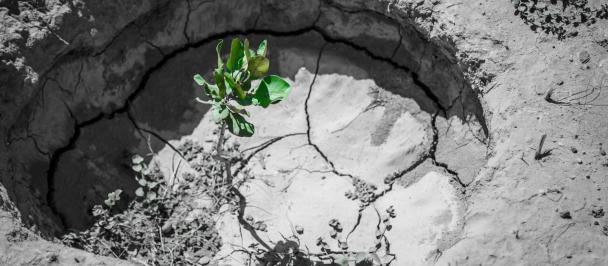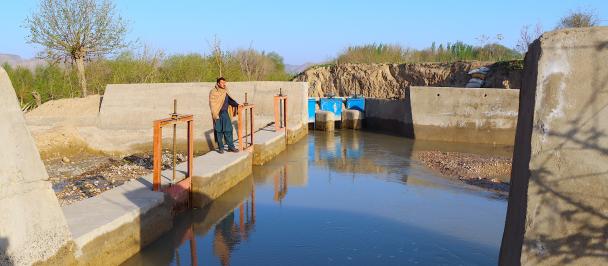A view of Kol-e-Hashmat Khan wetland in winter.
In the early morning of a harsh Kabul winter, almost everything is frozen, including the surface of Kol-e-Hashmat Khan lake.
The black gravestones of the cemetery by the lake, the snow-capped crags of the mountains behind, and the brown reeds emerging from the frozen water, combine to create a haunting beauty.
Haji Rabani, 52, walks carefully along the the edge of water, looking for movement amongst the reeds. He is looking for migratory birds, and this has been his job for the last 18 years.
“It’s too early” he observes, in a whisper. “They should start coming next month”.
Rabani is a representative of a community near Kol-e-Hashmat Khan wetland, on the southwest edge of Kabul.
A nest of wild birds in Kol-e-Hashmat Khan wetland.
Aside from being important ecosystems, wetlands provide important functions such as filtering contaminants, removing nutrients and sediment from runoff, contributing to groundwater recharge, storing floodwater, stabilizing shorelines, and providing habitats for numerous fish and wildlife species, such as birds.
The area was a royal hunting area between 1880 and 1919. In the 1930s, it was was declared a waterfowl reserve and afforded protection by the royal garrison.
Sadly, in more recent decades, Kol-e-Hashmat Khan has deteriorated. Decades of conflict and unplanned urban development have turned most of the wetland into a desert.
Rabani is one of those who have been supporting efforts to restore the park. “Before the war,” he observes, “a lot of birds were coming to the lake and it was very beautiful. But over time, fewer and fewer came.”
Problems have included: the dumping of waste into the lake; an inadequate supply of water; illegal encroachment onto the wetland; overharvesting of reeds; livestock grazing; the hunting or trapping of birds and theft of eggs, and other human activities. Research by the NGO Afghanistan Young Green shows that at one point, nearly a ton of waste was deposited in the lake every day.
Today, however, there is reason to hope that things are improving. Afghanistan’s Ministry of Agriculture, Irrigation and Livestock (MAIL), has developed a waste management plan to clean up the wetland, and restore it to its former glory.
With technical support from the United Nations Development Programme (UNDP), and funding from the Global Environment Facility (GEF) Small Grants Programme, MAIL and National Environmental Protection Agency is supporting communities and civil society organizations to restore and maintain the Kol-e-Hashmat Khan wetland habitat.
The MAIL plan includes measures to restore and safeguard species diversity and populations of migratory waterfowl. To deal with the waste problem, trash cans, garbage bags and trucks are being provided to nearby communities, to ensure that refuse is dealt with properly, rather than being dumped in the lake.
The work is supported by an awareness-raising campaign involving door-to-door visits, as well as larger events. Around 200 volunteers have been mobilized and trained on environmental laws and policies. These volunteers, along with trained MAIL rangers, patrol the wetland, ensuring that rules are respected.
Already, there have been visible improvements. The water level in the lake is now up to two meters, and there has also been a noticeable decrease in unlawful hunting and egg-collecting. Still, much more remains to be done to return Kol-e-Hashmat Khan to anything like its former state.
There is also another sign, which Rabani has noticed, which may give grounds for hope. As, as the level of the lake has risen, and the water has become cleaner, the birds have begun to return to Kol-e-Hashmat Khan.
UNDP through its GEF Small Grants Programme, and Biodiversity project supports MAIL conservation work in Kol-e-Hashmat Khan wetland and Band-e-Amir National Park. The projects focus on decreasing pressures on natural resources and conserving ecosystems for future generations to enjoy.

 Locations
Locations


